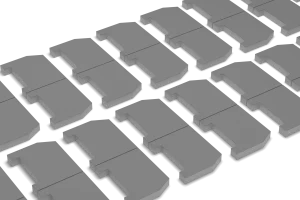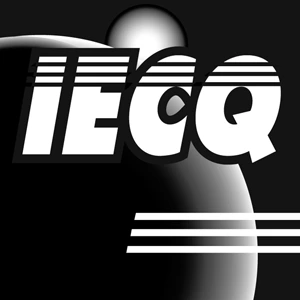Research & Development
GAP FILLER
Absorber
Absorber

Silicone

Non-Silicone
technologies
Advance TIMs
R&D Center
Shiu Li Technology possesses cutting-edge process technologies, a comprehensive R&D laboratory, and a reliability verification laboratory for thermal interface materials. Equipped with high-spec testing instruments and automated production facilities, the company continuously enhances its technical capabilities and high-yield quality, maintaining a stable and pragmatic approach to product and technology development. In response to technological evolution, customer demands, and global environmental trends, Asahi Technology continues to produce excellent R&D outcomes in products and processes, actively deploying key industrial technologies and showcasing its top-tier R&D capabilities. Moreover, it places great emphasis on reinforcing intellectual property rights by encouraging innovation and securing patents to create a competitive advantage.
NEW PROUDCTS
Newest
We have state-of-the-art laboratories and automated production equipment to conduct high-precision testing, analysis, and manufacturing, ensuring product stability and reliability.Shiu Li custom development capabilities enable timely delivery of thermal management solutions to meet customers' unique requirements.
We have state-of-the-art laboratories and automated production equipment to conduct high-precision testing, analysis, and manufacturing, ensuring product stability and reliability.

Single-Phase Immersion Thermal Pad DTT61-s
Thermal pads for single-phase immersion cooling feature optimized chemical formulations tested for durability and high-temp operation. Designed for high-power uses like AI servers and data centers, they improve thermal management and system stability.

Fiberglass cloth reinforced AS50-s
The fiberglass Cloth reinforced Thermal Pads use glass fiber cloth filled with thermally conductive compounds, combining strength and heat conduction for electronics heat transfer and insulation.

Thermal Absorber Film
Multifunctional Thin Thermal EMI Absorber Film as an innovative functional composite material, offer modern electronic engineering an effective solution to tackle both heat dissipation and EMI challenges simultaneously.

Thermal EMI Absorption
A Thermally Conductive EMI Absorption Pad is a composite material that combines high-efficiency heat dissipation and electromagnetic wave absorption capabilities. It fills thermal interface gaps between electronic components and heat sinks, while its absorber layer reduces reflection and resonance within specific frequency bands to suppress electromagnetic interference (EMI)。

Single-Phase Immersion Thermal Pad DTT61-s
Thermal pads for single-phase immersion cooling feature optimized chemical formulations tested for durability and high-temp operation. Designed for high-power uses like AI servers and data centers, they improve thermal management and system stability.

Fiberglass cloth reinforced AS50-s
The fiberglass Cloth reinforced Thermal Pads use glass fiber cloth filled with thermally conductive compounds, combining strength and heat conduction for electronics heat transfer and insulation.

Shiu Li Technology upholds its commitment to unveiling new products and innovations every year, bringing you surprises and excitement beyond imagination. Our product launches are not just events; they are demonstrations of power! With groundbreaking innovation, our technical team ensures your products lead the trend. This is the strength of Asahi!
Frank Jian
General Manager
No posts were found for provided query parameters.
industries
產業應用介紹
industries
產業應用
No posts were found for provided query parameters.
旭立的技術團隊來自不同領域的頂尖人才組成,專注於開發高性能導熱和創新的材料
Certification
Professional Quality
Shiu Li Technology's interface thermal conductive materials feature a comprehensive quality management system and have obtained global certifications.
9001
Published
2015

Quality System
Organizations demonstrate the ability to consistently provide products and services that meet customer requirements and comply with applicable legal and regulatory standards.
14001
Published
2015

Environmental Policy
More effectively utilize natural resources and energy while ensuring compliance with applicable environmental regulations and customer requirements or supplier agreement standards.
16949
Published
2016

Automotive Quality System
Provides a quality management system for continuous improvement, defect prevention, and reduction of variation and waste within the automotive industry supply chain operations.
080000
Published
2022

HSPM
International standard developed by IEC for managing and controlling the use of hazardous substances in products to ensure compliance with global legal and customer requirements.
D-U-N-S
Published
1962

Dun & Bradstreet
Identifies potential risks including fraud and compliance issues, ensuring suppliers or partners meet ethical and legal requirements for sustainable business operations.
ROHS
Published
2023

EU Environmental Policy
European Union directive designed to restrict the use of certain hazardous substances in electrical and electronic equipment to protect human health and environmental safety.
RBA
Published
2015

Responsible Business Alliance
Responsible Business Alliance Code of Conduct ensuring compliance with labor rights, environmental protection, and business ethics standards for sustainable electronics supply chains.
UL 94
Published
2023

Underwriters Laboratories
Plastic material flammability testing standard developed by Underwriters Laboratories, widely used for evaluating the flame retardant performance of various plastic materials.
REACH
Published
2007

Chemical Registration
Requires manufacturers and importers to demonstrate that their chemical substances are safe for health and environment, replacing high-concern substances when necessary for safety.
About us
LiPOLY® Advance TIMs
Thermal Solutions Expert
About
We believe that thermal conductivity is not just a technology but an innovative revolution. Our products combine technology and uniqueness, injecting boundless power into your products.
Company History
Continuously investing in key industrial technologies, showcasing top-notch R&D capabilities, and creating greater value for the future.
Professional Quality
Shiu Li Technology's interface thermal conductive materials feature a comprehensive quality management system and have obtained global certifications.
The global demand for thermal conductivity is growing exponentially, driving rapid advancements in thermal management technologies.
With the explosive growth in computational demands across applications and the surge in demand for AI devices, major companies worldwide are intensifying procurement efforts to stay competitive. In this context, thermal management has become critical to ensuring stable and efficient operations.







